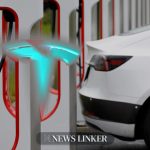In a bold move, Tesla has announced intentions to proceed with its ambitious project to deploy a series of Megachargers, designed to support the Tesla Semi truck across a major U.S. freight route. This decision comes after the federal government opted not to fund the venture. The network, spanning approximately 1,800 miles from Fremont, California to Laredo, Texas, was initially part of a larger request for federal assistance which was subsequently denied. Tesla’s resolve underscores its commitment to enhancing EV infrastructure independently, potentially leveraging state funding or internal resources to realize this vision.
Background on the Megacharger Initiative
The proposed Megacharger network by Tesla is integral to making its all-electric Class 8 truck a viable option for long-haul freight operations across the United States. Despite the setback from the federal government’s decision to fund alternative hydrogen projects, Tesla’s plan involves a significant self-investment of around $24 million, reflecting its strategic commitment to sustainable transportation solutions.
Comparison to Other Infrastructure Developments
While Tesla focuses on expanding its electric charging infrastructure, the federal government recently allocated $70 million to the North Texas Council of Governments. This funding is aimed at constructing hydrogen fueling stations, signifying a diversified approach to enhancing green energy resources within the transportation sector. These initiatives are part of broader efforts to establish a cleaner freight corridor from Southern California to Texas.
In related news, an article from Green Tech Media titled “Expansion of EV Charging Stations in the US” illustrates the growing trend of private investments in electric vehicle infrastructure. Additionally, a report by Energy Central, “Hydrogen Fuel Adoption in Commercial Transport”, discusses the increasing interest in hydrogen fuel as a viable alternative to traditional fossil fuels, shedding light on the competitive landscape of sustainable freight solutions.
Useful information
- Tesla is considering state funding and its own investment for the Megachargers.
- Hydrogen fueling stations are also gaining federal support.
- Private investment in EV infrastructure is on the rise, reflecting a shift towards sustainable energy solutions in transportation.
Tesla’s perseverance in building its Megacharger network without federal support marks a significant step towards sustainable long-haul transportation. By potentially utilizing state funds or its own reserves, Tesla not only demonstrates its commitment to innovation but also its independence in strategic business decisions. As the landscape of transportation energy diversifies, Tesla’s initiatives will likely influence future infrastructure developments and energy policies. The emergence of both electric and hydrogen fuel solutions signifies a pivotal move towards reducing carbon footprints across major freight corridors in the United States, pointing towards a greener future in commercial transport.










